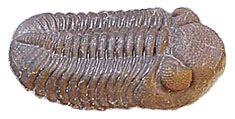Adventures on Earth for the January 5 edition of The Review
By George E. Beetham Jr.
When Antarctica’s Larsen Ice Shelf broke up between 1995 and 2002, scientists became concerned that global warming might hasten the melting of ice on the polar continent, raising sea levels perhaps hundreds of feet.
By 2006, the Antarctic Geologic Drilling Project (Andrill) set out to answer the questions global warming posed.
The idea was to drill through the ice sheet into the sea below and then drill into the sea floor below that. Scientists hoped to study sediments to learn about Antarcticclimate change over millions of years.
Until Andrill, scientists had drilled into the ice to study climate. But the ice sheets and shelves that cover Antarctica only go back only about 800,000 years. Drilling into the earth below the sea would provide cores dating far earlier than that.
The cores that were obtained are still being studied, and more drilling projects are taking place. Still, studies to date tell a fascinating story about Antarctica and climate change around the world.
Antarctica contains about 90 percent of the Earth’s ice according to an Andrill report. The total volume is estimated at 29 million cubic kilometers to 32 million cubic kilometers.
If all that ice should melt, sea levels could rise as much as 200 feet. For reference, that would cover nearly all of Philadelphia with water.
Andrill is a multi-national effort staffed by researchers from Germany, Italy, New Zealand, and the United States. Andrill scientists have learned that Antarctica was not always covered in ice, even during the recent ice age.
Some 190 million years ago, Antarctica was located closer to the Equator. Connected to present day Australia, India, and East Africa in the supercontinent Pangea, the climate was warm enough to support vegetation and animal life.
As Pangea broke up, Antarctica drifted south toward the South Pole. For the past 100 million years it has been roughly in its present position. That would seem to indicate that it was covered by ice during that entire time.
That is not the case. Several times the continent has warmed sufficiently to allow plant life to return. Volcanoes erupted, depositing fine ash on top of ice. And marine creatures associated with warm oceans were found in the sediments.
In other words, Antarctica warmed and cooled several times in the past 100 million years.
The present ice sheet did not begin to form until 34 million years ago. Then, during the Pliocene about 5 million years ago, the continent warmed up yet again.
Scientists have discovered remnants of peat moss, wood fragments, and leaves that were buried in sediments, but flash frozen. They never had a chance to become fossilized into coal. The fragments are the original plants.
In the Mullens Valley of East Antarctica, volcanic ash that settled on top of the ice sheet is pristine. The ice never melted and the ash never formed into rock. The ash is millions of years old and evidence that volcanic activity occurred about that time.
Evidence of the Pliocene warming is found around the Earth. In New Zealand, sediments include fossils of marine creatures, indicating the sea level was some 60 feet higher. Along the shores of the Chesapeake Bay, the same evidence is found.
This indicates that the Antarctic ice sheet has melted at least partially in the past 30 million years and will likely do so again.
These variations were natural cycles in Earth’s climate. Current concerns over global warming look to human burning of fossil fuels as a warming influence.
Next week: Meltdown

No comments:
Post a Comment